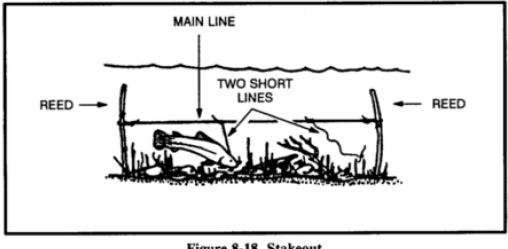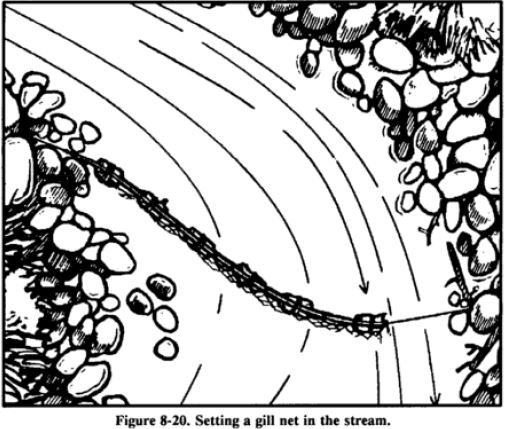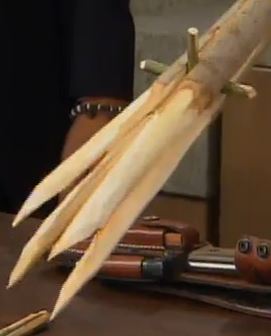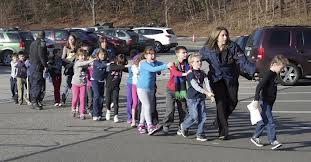
One of the most dangerous medical conditions in an emergency is uncontrolled bleeding. Having the knowledge to stop bleeding is something each of us should have. It can take minutes for an ambulance to get to the scene when times are normal. In a large scale emergency or a survival situation, you may not be able to wait for the ambulance. If it were not for the emergency first aid given to people who lost limbs and had other horrific injuries, there would have been many more than three tragic deaths in Boston.
Perfect Circumstances
In perfect circumstances, you would try to reduce or stop the bleeding until the ambulance arrives and you would have access to a well-stocked first aid kit. You would also be able to wash your hands and put on gloves to avoid contact with the blood and spread of infection to the patient.
Basic Training
I think everyone should have some basic first aid training. The Red Cross offers First Aid, CPR and AED training. Our community education offers classes for a small fee as well. American Academy of CPR & First Aid, Inc. is a web based company that offers several first aid and CPR related classes online.
Basic first aid to stop bleeding; if possible have the person lie down and elevate the legs as well as the site of the bleeding.
If possible, flush the wound to remove any obvious dirt or debris. Don’t try to remove any large debris or more deeply embedded things.
Apply pressure to the wound, using clean bandages if you have them. If you find yourself in a place where you don’t have many clean bandages, make do with what you have; use your hands if nothing else is available.
Do NOT remove the bandage to check on the wound! If the bandage gets soaked through, add another to it and continue to apply pressure.
Arterial bleeding might not stop with applied pressure. In that case, you can apply pressure to the closest pressure point. The pressure point in the arm is on the inside of the arm, just above the elbow and below the arm pit. Pressure points for the leg are behind the knee and in the groin. Press the pressure point with your fingers flat, pushing against the bone. Keep applying pressure directly on the wound with your other hand.
Tourniquets have a sort of bad rap, as complications from them can lead to tissue damage or even a loss of limb. They should only be used when arterial bleeding cannot be stopped with direct pressure and as a last resort. A proper tourniquet should be 1”-2” wide. Any narrower and you may cause more damage or even cause a new cut. The wider the tourniquet the more pressure needed to stop bleeding. Here is a guide to applying a tourniquet.
Supplies
The average first aid kit is great for stopping small amounts of blood but won’t be very effective against severe bleeding. You can add some items to beef up your first aid kit that will make it much more effective. Members of the Preparedness Club get a 10% discount at First Aid Products.com and they carry almost everything I am going to list. Rolls of gauze and 4″ x 4″ bandages are great for stopping bleeding, as are feminine hygiene products.
Quikclot Sport Pack and CELOX
These two products are hemostatic agents that are very effective at stopping blood loss. There was some controversy when they first came out, as they sometimes caused tissue damage in the process. They have since improved greatly and are in use at hospitals and clinics. In fact, I cut my leg pretty badly a few years ago. I applied a bandage and used an ace wrap as a pressure bandage. When I got to the clinic for stitches, the bleeding started again as soon as the bandages were removed. They used Qwik Clot to stop the bleeding and then stitched me up. Trudee underwent heart catheter ablation at a local hospital last year. When they pulled the catheters out, Qwik Clot was used to stop the bleeding.
Both companies sell a variety of products. I personally bought these Quikclot Sport Pack pads but another type might fit your needs better.
Israeli Battle Dressing
This is a type of patented pressure dressing that can be used for stopping bleeding, splinting or as a tourniquet if needed. Using it is hard to explain, hence the video below. I have purchased these as well and will be making a trauma kit for the vehicles and one for the house, as an add-on for the primary first aid kit.
Other Sources of Information
Here are some articles from two sites I subscribe to, with more information on stopping blood loss.
Treating The Hemorrhagic Wound
The Survival Doctor
Skin Lacerations: How to Treat a Cut, Scrape, Gash, Stab Wound
How to Tell How Bad a Wound Is
Arteries Vs. Veins: How to Tell the Difference and Stop the Bleeding
Video: How to Repair a Cut With Duct
If you liked this article please think about sharing it on the social media listed below, thanks!












 Burnout; noun; Also, burn-out; fatigue, frustration, or apathy resulting from prolonged stress, overwork, or intense activity.
Burnout; noun; Also, burn-out; fatigue, frustration, or apathy resulting from prolonged stress, overwork, or intense activity.



